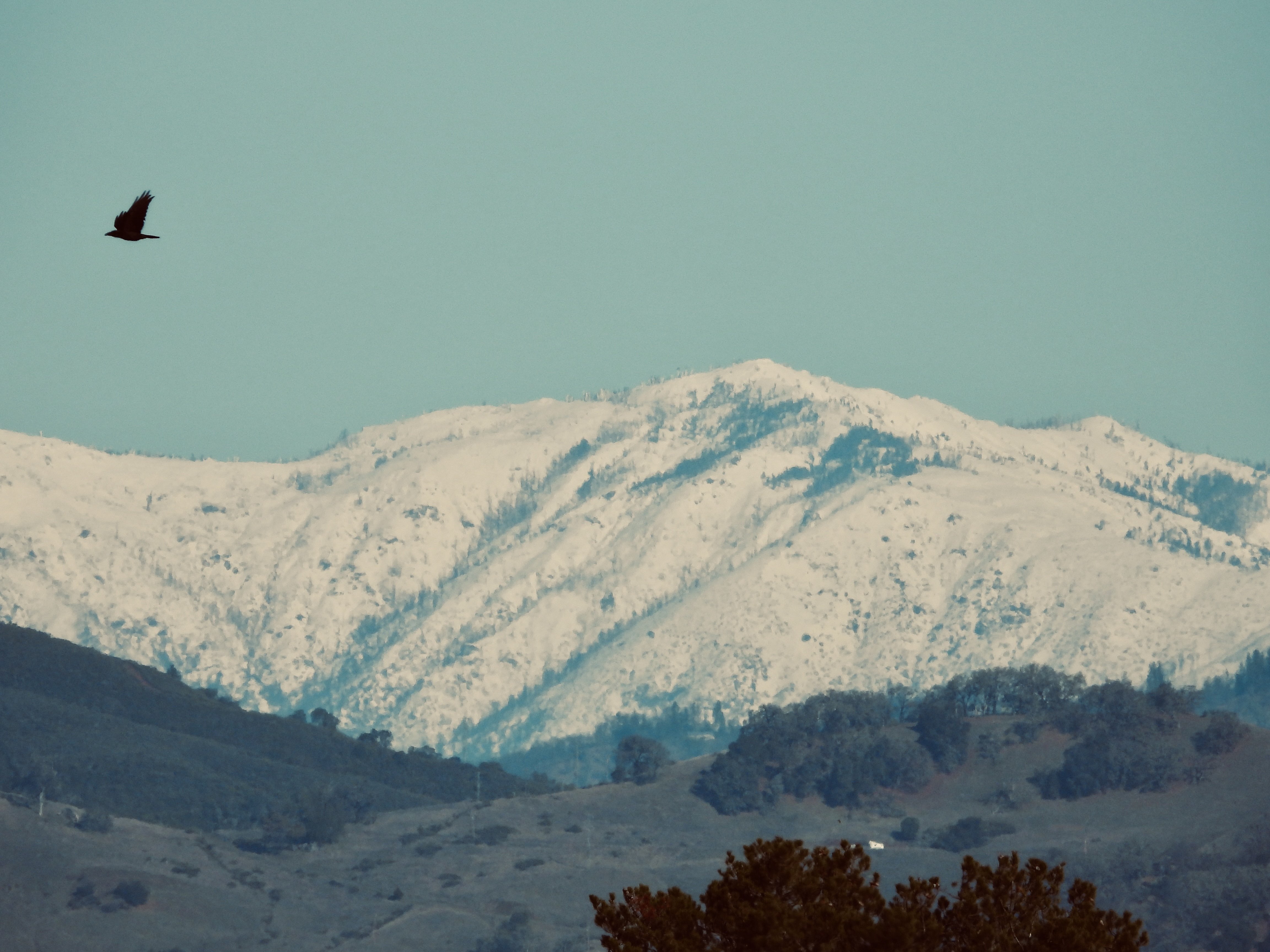
On their last day on the Mendocino Coast, scientists from the California Academy of Sciences found an elusive predator that’s almost wasted away in the wild. Aside from the occasional uni-loving human, the pycnopodia sea star is the one creature that will eat purple urchin, which have devoured most of the bull kelp off the California coast. Most wild pycnopodia succumbed to a wasting disease that started tearing through the population in 2014. But one young celebrity member of the species puts in regular appearances off the headlands in Mendocino.
The scientists were in town for a bioblitz called Snapshot Cal Coast, an effort to document near-shore species that’s been taking place every solstice since 2016. It started in response to the warm water blob that began heating the waters right around the same time the wasting disease wiped out the starfish. Scientists use the iNaturalist app and try to encourage nature-lovers to do the same, to increase the data set that informs their studies of climate change and species’ range.
This is the last Snapshot event for Alison Young. She’s co-director of the Center for Biodiversity and Community Science at the Cal Academy, and she was part of the effort to start the Snapshot Cal Coast initiative. Just before low tide on Tuesday morning, she stood on a bluff overlooking the blustery sea and described the object of the day’s quest. To her knowledge, informed by a recent upload on the iNaturalist app, the pycnopodia had been spotted a few days prior to the bioblitz. “It’s a relatively small sunflower star,” she began; “maybe slightly bigger than an urchin, which is exciting.” It is yellowish-brown, like much of its surroundings, and doesn’t yet have the two dozen or so arms that the species is capable of developing.
The water was too rough for diving, but about two dozen scientists made their way down the path on foot and prepared to wade through the tidepools for a glimpse of the pycnopodia, whose voracious appetite is key to restoring the ecosystem. For all its charm and beauty, it is not a dainty eater, according to Kylie Lev, a curator at Steinhart Aquarium in San Francisco who is raising captive pycnopodia in an effort to learn more about them.
Like many sea stars, the pycnopodia has one opening in its body, which it uses both to eat and expel waste from its body. “They can eject parts of their stomach to sit on top of their food,” Lev recounted. They pre-digest it, then bring the food as well as their stomachs back into their bodies. Lev calls them “garbage disposals of the sea.”

Within about an hour and a half of scientists hitting the beach, a cry went up from a cave that’s only available to terrestrial beings during low tide. Lisa Larkin, an animal care manager at the Steinhart Aquarium, had spotted the diminutive 12-armed star, which is not quite big enough yet to intimidate the local urchin. The star-seekers had already scoured the pool in the cave, but Larkin “came back when it was quieter, and he was just sitting right there.” She recalled that she had seen some in the wild in the 2010’s, “pre-wasting. This is my first one I’ve seen in the wild since then,” she marveled. “It’s so incredible.”
The pycnopodia is utterly unlike the other seastars in the tidepools: the lanky-long-legged brittle star, the lush fat-limbed ochre star, or even the ubiquitous orange and white bat star, which sometimes has six arms. One unfortunate small bat star appeared to be on the menu for a swarm of purple urchin. While its five-or-six-armed relatives may occasionally lift the tip of a limb from the surface of a rock, the pycnopodia scurries along in a huge rush to drop its belly over one of the many things in the water that don’t move fast.
Dr. Elora Lopez-Nandam, who is designing the research questions for the genetic studies of the captive pycnopodia at Steinhart, watched the wild star as it hunted along the edges of a rock outcropping. She estimates it is six months to two years old.

“This little individual gives us a lot of hope, because if there’s one, there’s got to be more,” she reasoned, as scientists and dedicated civilian tidepoolers gathered around, exclaiming and snapping photos of the little predator. “Potentially just right out here where the waves are breaking, and we’re not able to see them. But we hope that they’re there, and that they’re reproducing.” Once it’s bigger and scientists have permits to take a small genetic sample of its tissue, she hopes to sequence its DNA and further the understanding of the species along the Mendocino coast.
The much sought-after starfish fluttered photogenically, appearing unfazed by the attention it was receiving. Do they have personalities? “I’ve only just met this one,” Lopez-Nandam qualified; “but I think it’s very charismatic. It seems gregarious. I haven’t met too many other pycnopodias so I can’t compare it. But I’m sure that they all have different ways of being in the world.”








